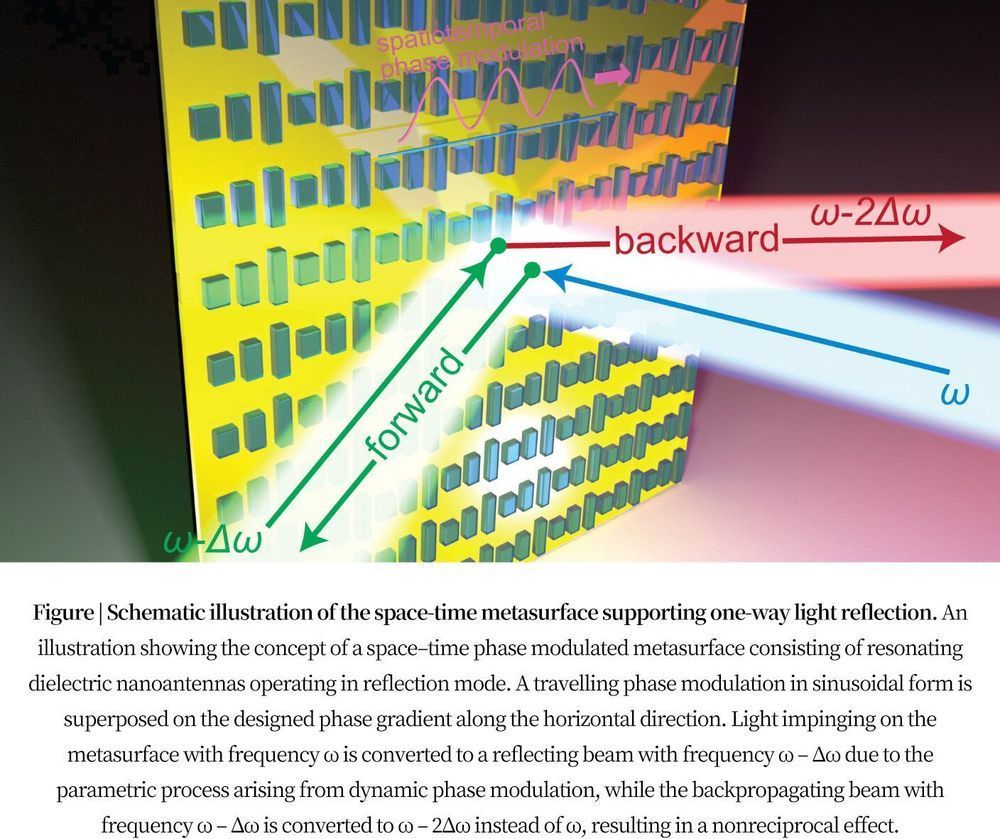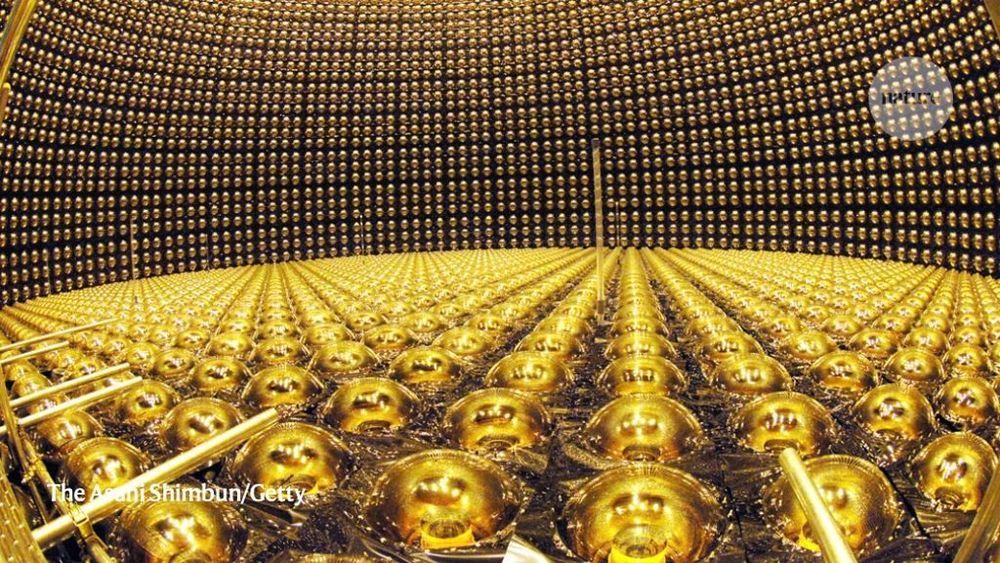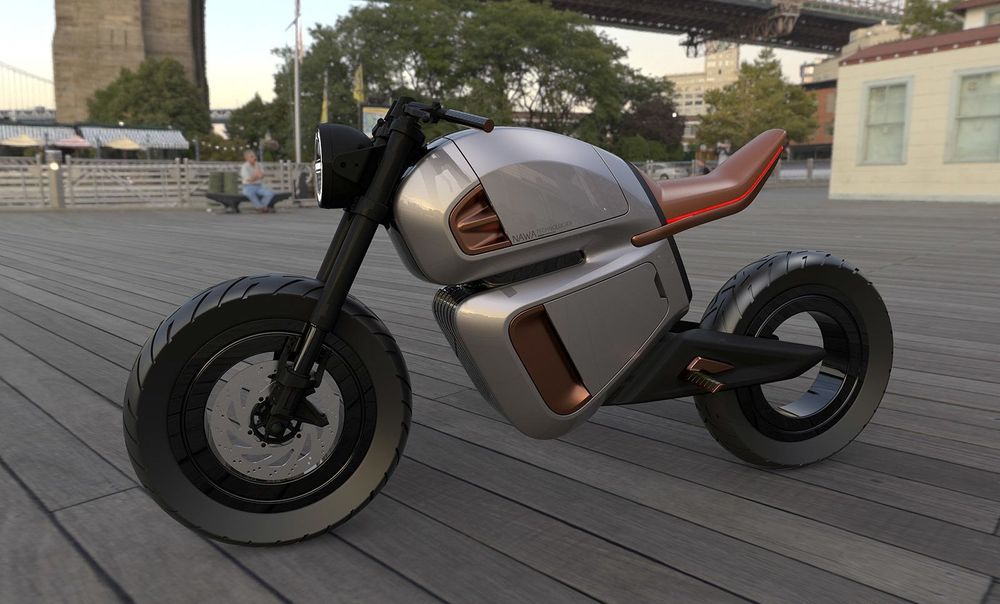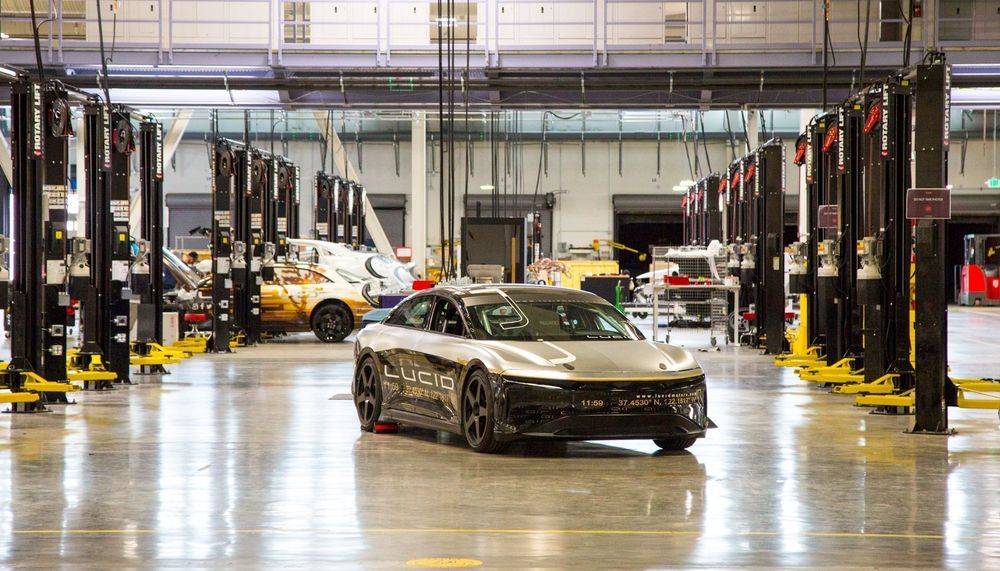Dec 21, 2019
Space-time metasurface makes light reflect only in one direction
Posted by Quinn Sena in categories: physics, space travel
Light propagation is usually reciprocal, meaning that the trajectory of light travelling in one direction is identical to that of light travelling in the opposite direction. Breaking reciprocity can make light propagate only in one direction. Optical components that support such unidirectional flow of light, for example isolators and circulators, are indispensable building blocks in many modern laser and communication systems. They are currently almost exclusively based on the magneto-optic effect, making the devices bulky and difficult for integration. A magnetic-free route to achieve nonreciprocal light propagation in many optical applications is therefore in great demand.
Recently, scientists developed a new type of optical metasurface with which phase modulation in both space and time is imposed on the reflected light, leading to different paths for the forward and backward light propagation. For the first time, nonreciprocal light propagation in free space was realized experimentally at optical frequencies with an ultrathin component.
“This is the first optical metasurface with controllable ultrafast time-varying properties that is capable of breaking optical reciprocity without a bulky magnet,” said Xingjie Ni, the Charles H. Fetter Assistant Professor in Department of Electrical Engineering at the Pennsylvania State University. The results were published this week in Light: Science and Applications.


















